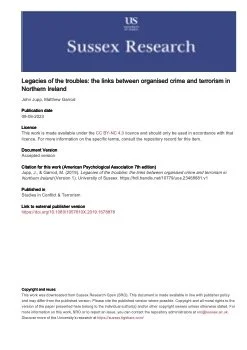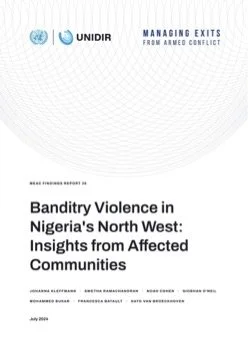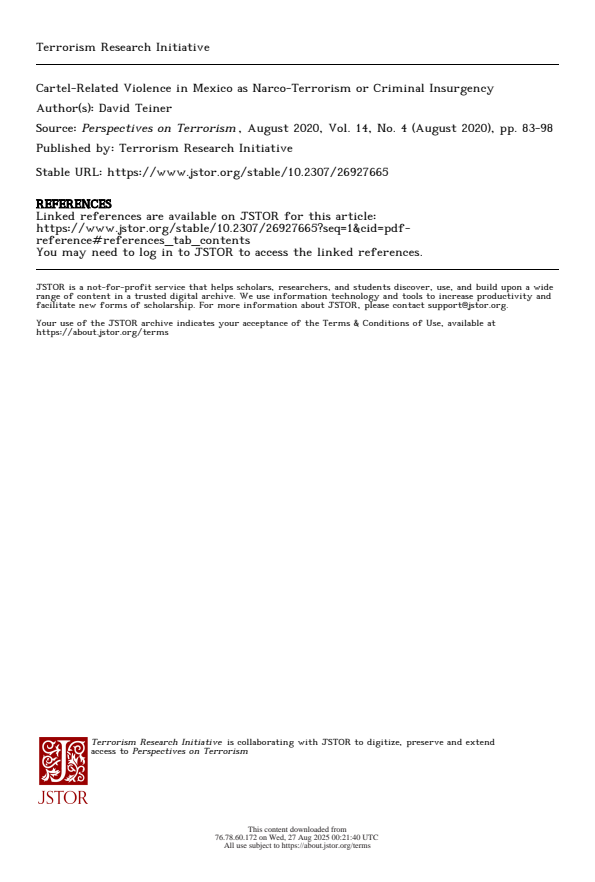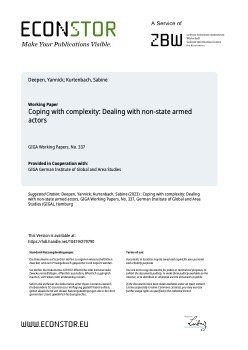By Michael Osman, Monika Roszkowska, Murat Yildiz, Robert Muggah, et al.
Several Caribbean countries are registering an intensification of organized crime and rising incidence of lethal violence. A combination of risk factors including surging drug production in South America, the proliferation and competition of transnational and local gangs, and high availability and use of firearms have contributed to soaring homicide rates. Countries such as Jamaica, Saint Lucia, and Trinidad and Tobago currently register among the highest murder rates globally. Faced with exceedingly high levels of collective and interpersonal violence, some Caribbean governments, for example that of Jamaica have declared states of emergencies to fight violent crime while simultaneously ramping up regional efforts to curb the trafficking of firearms and ammunition. There is a growing consensus among the heads of government of CARICOM countries that the crime and violence situation could deteriorate further still. The perpetrators of collective violence in the Caribbean vary, though most are connected to a diverse array of criminal markets across the region. The determination of what constitutes a “gang ” differs across the Caribbean. The capacity of these groups vary: there is no dominant configuration of criminal groups and criminal relationships across all locations in the region. Highly organized criminal networks and street gangs are involved in multiple transnational criminal markets spanning South and Central America, North America, and Western Europe. Larger, more sophisticated gangs alternately collude and compete with state actors and a host of non-state intermediaries to procure firearms and transport, transship, and traffic in cocaine, cannabis, and to a lesser extent heroin and amphetamines. For the most part, smaller street gangs are more domestically oriented; some are politically connected and secure government contracts to provide resources and services that are historically underserved by the state. In addition to providing social welfare, these organizations often impose protection rackets within the areas they operate. These protection rackets allow these neighborhood gangs to engage in criminal activities ranging from selling drugs, trafficking in firearms, human smuggling, and contract killing to managing lottery scams, extortion, and racketeering. A small number of the region’s gangs are more organized and have expanded their criminal networks to facilitate transnational crimes, including the transportation and protection of drug shipments as well as firearms trafficking, human smuggling, and cyber-related crimes. In larger countries in the Caribbean such as Jamaica and Trinidad and Tobago, aggressive state-led anti-gang measures have accelerated the fragmentation or “splintering” of gangs, further heightening inter- and intra-factional violence and demand for firearms and ammunition. While the overall number and membership of Caribbean gangs appears to have expanded, a relatively small number of them are involved in transnational trafficking of drugs, firearms, and other contraband. Only a handful of the hundreds of gangs active in countries such as Guyana, Jamaica, Saint Lucia, and Trinidad and Tobago appear to be directly implicated in cross-border crimes such as the trafficking of cocaine and cannabis or smuggling of weapons. In many cases, well-connected gang leaders, including former inmates of US prisons, facilitate shipments by leveraging their networks from Colombia and Venezuela to North America and Western Europe. Meanwhile, local gang members may be subcontracted for “protecting” transshipment of drugs, sourcing firearms abroad (primarily from the US), and organizing local distribution and retail. However, most gangs in the Caribbean are inward-facing and connected to local political economies ranging from disrupting elections and securing government contracts to local drug dealing, prostitution, scams, and extortion. Rather than facilitate international drug shipments or human trafficking rings, gangs throughout the region are typically parochial and focused instead on protecting their territory. (continued)
Vienna: UNODC, 2024. 62p.





















